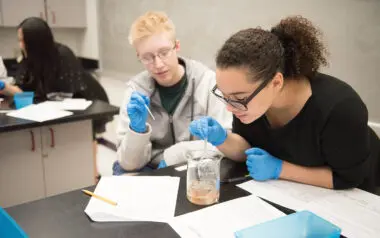March 2022 marks two years since the World Health Organization declared COVID-19 a pandemic. This marker provides a natural point for reflection for nonprofit boards to assess how they have reacted to a changing environment and how they can proactively plan for their organization’s future.
CCS has recently published insights on developing board benchmarking reports and integrating diversity, equity, and inclusion (DEI) practices into board activities. In this article, we will discuss four areas where we have seen cause disruption for nonprofit boards in recent months:
- Job market turbulence
- Budget reallocation
- Continued virtual operations
- Antiquated procedures and materials
In each section, we provide a set of questions designed to generate reflective discussions for nonprofit boards as they seek to optimize their operations.
1. The Impact of Job Market Turbulence on Creating Board Fatigue and Vacancies
The Great Resignation occupies the minds of many board leaders. Board members may be dealing with understaffed teams at their place of work or they may be on the move themselves. This turbulence can make board participation a lower priority and can lead to vacancies in boardrooms as individuals grapple with the Great Resignation.
As the Association of Governing Boards of Universities and Colleges (AGB) writes, “highly effective trustees are a prerequisite for a highly effective board.” When considering your board’s stability, ask:
- Do you find trustees are preoccupied with external pressures?
- Are there multiple vacancies on your board? If so, why?
- How recently has your board reviewed its onboarding and mentoring processes?
- How effective is your nominating committee at staying true to institutional priorities?
2. The Drain of Budget Reallocation on Fiduciary Management
Many boards have needed to play catch-up with budget allocations due to the unforeseen financial stress of the pandemic. After two years of organizations’ expenses being dominated by pandemic concerns, boards need to recalibrate what expenses will be critical and enduring and what fundraising goals will be relevant in the next year and beyond.
Moreover, boards need to be ready to meet these fundraising goals. When asked to rank 18 areas of board responsibility in terms of importance, 70% of chief executives ranked fundraising as very important. Fundraising was prioritized over a board’s ability to think strategically, guide the direction of the organization, possess knowledge of organizational programs, and other factors.
Understanding the goal that your organization is working towards will help a board stay the course when it comes to budget allocations and fundraising. As your board reevaluates the budget, key questions to consider include:
- Is your board ready to embrace the new reality of what is feasible in this environment?
- Is your board informed and comfortable asking for gifts?
- Does your board feel connected to the community your organization is serving?
3. The TENDENCY TO DISENGAGE IN a Virtual World
Addressing board vacancies and budget priorities must be balanced with engaging current board members. There is no doubt that video conferencing has made us all more accessible, but more meetings do not necessarily translate into better efficiency or stronger connections. Even prior to the pandemic, a study found that 71% of senior managers claimed that their meetings tended to be unproductive and inefficient—common traps were meetings that are too frequent, poorly timed, or badly run. Planning for meetings, communicating goals, and clearly outlining roles are undervalued tools that determine the success of a meeting.
As we enter the third year of the pandemic, many people are growing fatigued of Zoom. With the advent of hybrid meetings, boards need to rethink engagement strategies to inspire board members’ participation. We’ve seen boards get creative with these engagement strategies—for example, the board of a large public university invited their marching band to spice up a recent board meeting.
Even if you don’t have a marching band, you can still inject board meetings with more energy and inspiration! Consider the following questions to ensure that meetings and other operating policies promote board engagement:
- Do board members understand their roles post pandemic?
- How comfortable is your board with changed procedures and expectations?
- Is there consensus around the new norms for meetings and events?
- Have trustees tried new ways to socialize in place of in-person informal gatherings?
4. The Ineffectiveness of Antiquated Procedures and Materials
Upheavals in how we operate may require that institutions stop and evaluate the mechanics of their board. Yesterday’s board playbook may no longer be sufficient; procedures and manuals need to be reviewed and potentially revised.
It is likely that recent challenges have exposed vulnerabilities in board operating structures. To get started on bringing procedures and materials up to date, questions to consider include:
- Is there a current crisis management plan in place?
- Does the succession plan need to be reevaluated?
- Are fact sheets up to date?
- Has the mission of the board shifted?
- Do board manuals need to be revamped?
- Should board recruitment be updated to keep track with DEI efforts?
A well-functioning board is essential to helping a nonprofit achieve its mission. It’s worth the extra attention and investment to ensure that your organization’s board is optimized for today’s world. With careful consideration on these four areas, board chairs and staff leadership can improve the board’s operations, feel more in control during unpredictable times, and bring more satisfaction and sense of purpose to their board.
Want to start a conversation?
CCS Fundraising helps nonprofits craft individualized approaches and actionable next steps for enhancing their board performance.
